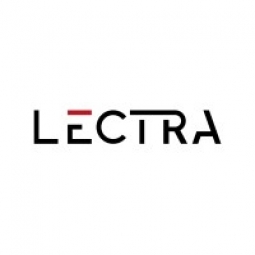Download PDF
Romanita : A Cut Above the Rest with Lectra
Technology Category
- Functional Applications - Computerized Maintenance Management Systems (CMMS)
- Functional Applications - Manufacturing Execution Systems (MES)
- Functional Applications - Product Lifecycle Management Systems (PLM)
Applicable Industries
- Apparel
Applicable Functions
- Process Manufacturing
- Product Research & Development
Use Cases
- Inventory Management
- Manufacturing System Automation
- Predictive Maintenance
Services
- Software Design & Engineering Services
- System Integration
- Training
The Challenge
Romanita, one of Romania’s largest apparel manufacturers, faced significant challenges in keeping up with the fast-paced demands of the modern fashion industry. With a production facility employing 800 people and producing 8,000 pieces a month, the company had built a reputation for high-quality clothing at low production costs. However, shortened deadlines and shrinking profit margins were making it difficult for Romanita to turn orders around quickly enough to meet demand. The company needed to make its cutting room more efficient to minimize unnecessary losses and continue delivering on time, thereby maintaining the trust of its international customers, which include brands like H&M, Zara, and Marks & Spencer.
About The Customer
Founded in 1972, Romanita is a prominent apparel manufacturer in Romania, known for producing clothing for international brands such as H&M, Zara, Massimo Dutti, Tesco, Marks & Spencer, and Primark. The company operates a 3,800m2 production facility and employs 800 people. Romanita has built a strong reputation for maintaining rigorous standards and delivering high-quality clothing at relatively low production costs. Over the years, the company has evolved into one of the largest and most technically advanced clothing factories in Romania. As a family business, many of its employees have parents who also worked at the factory, highlighting its deep-rooted community ties. Romanita is now focused on attracting more international customers and modernizing its operations to stay competitive in the fast-paced fashion industry.
The Solution
To address its challenges, Romanita consulted with Lectra’s experts and decided to implement several of Lectra’s advanced technologies. The company began using Lectra’s marker-making software, Diamino, to create more fabric-efficient markers. Additionally, they invested in two Brio automatic spreading machines and two Vector cutting machines for their cutting room. These new technologies allowed Romanita to cut larger volumes of fabric more accurately and quickly, reducing machine downtime and minimizing fabric waste. The implementation of these solutions resulted in a 25% reduction in error rates and a 2% saving in fabric. Romanita was so pleased with the results that they decided to replace their existing CAD solutions with Lectra’s patternmaking software, Modaris, to further speed up their product development process. The integration of these technologies has significantly improved Romanita’s operational efficiency, enabling them to meet tight deadlines and maintain high-quality standards.
Operational Impact
Quantitative Benefit
Related Case Studies.

Case Study
Fire Alarm System and Remote Monitoring Sytem
Fire alarm systems are essential in providing an early warning in the event of fire. They help to save lives and protect property whilst also fulfilling the needs of insurance companies and government departments.Fire alarm systems typically consist of several inter-linked components, such as smoke detectors, heat detector, carbon monoxide, manual call points, sounders, alarm and buzzer. The fire alarm system should give immediate information in order to prevent the fire spread and protect live and property.To get maximum protection a shoe manufacturer in Indonesia opted for a new fire alarm system to monitor 13 production sites spread over 160 hectars. Although the company had an existing fire alarm system, it could not be monitored remotely.It was essential that the new system would be able to be monitored from a central control room. It needed to be able to connect to the existing smoke detector and manual call point. Information should be easily collected and passed on to the Supervisory Control and Data Acquisition (SCADA) system. Furthermore, the system should have several features such as alarm management, auto reporting, being connected to many client computers without additional cost, and run 24/7 without fails. The company also needed a system which could be implemented without changing the architecture of the existing fire alarm system.

Case Study
IoT Applications and Upgrades in Textile Plant
At any given time, the textile company’s manufacturing facility has up to 2,000 textile carts in use. These carts are pushed from room to room, carrying materials or semi-finished products. Previously, a paper with a hand-written description was attached to each cart. This traditional method of processing made product tracking extremely difficult. Additionally, making sure that every cart of materials or semi-finished products went to its correct processing work station was also a problem. Therefore, the company desired an intelligent solution for tracking assets at their factories. They also wanted a solution that would help them collect process data so they could improve their manufacturing efficiency.

Case Study
Retailer Uses RFID Scanner to Improve Efficiency
Patrizia Pepe wished to improve the logistics of their warehouse: accepting incoming goods from their production sites, movement of items throughout
the warehouse, and packaging of goods for distribution to the retail locations. They initially tried to use barcodes for this function. Because barcodes must be individually scanned within a line-of-sight, the acceptance of goods coming into the warehouse was too time consuming. Working with the University of Florence, Patrizia Pepe instituted a five-month pilot project beginning in August of 2009 to test the validity of an RFID solution. The pilot involved tagging of about 60,000 items for the second seasonal collection, and convinced the company to move forward with tagging all items.

Case Study
Monitoring and Controlling Automatic Mixing and Dispensing Machines
As technology advances, textile manufacturing has been transformed from a labor-intensive to a partially or fully automated industry. Automation is significant in all segments of textile production - from spinning to printing, and textile machinery manufacturers are constantly searching for new technologies and automation processes will increase the productivity of their machines. The color paste mixing and dispensing machine is an essential part of the printing and dyeing process. With the advantage of automatically computerized controls and database management, the system can significantly improve its dispensing precision, working efficiency and production quality as well as reducing material consumption.







